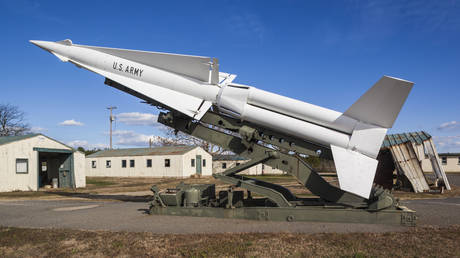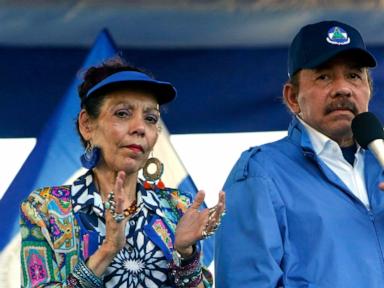ARTICLE AD BOX
BRUSSELS — The European Union is appealing to an unlikely ally to help finally rid the continent of Russian energy: oil and gas executives.
They’re not all necessarily that interested, though.
On Tuesday, the European Commission, the EU’s executive, will unveil a long-awaited plan to sever the bloc’s final Russian energy links. According to two European diplomats, the scheme will propose new powers for private companies to divest from Russia, allowing them to end contracts early and urging them to halt any future deals.
It’s a last-ditch pitch from the EU. Without support for more energy sanctions, and with some officials even discussing an eventual return to fuel from Moscow, Brussels is increasingly shopping for alternative options. There’s also U.S. President Donald Trump, who has publicly toyed with lifting America’s hard-hitting Russia restrictions.
So the EU is turning to the market, attempting to send a long-term signal that Brussels is committed to leaving Russian fuel for good. No turning back.
“Despite the significant reduction of the dependency on Russian fossil fuels in the last years, we were still importing 19 percent of Russian gas in 2024,” EU energy chief Dan Jørgensen said ahead of the plan’s release. “This compromises our energy security, exposing us to economic blackmail and manipulation.”
“The roadmap will help the EU regain energy independence from Russia,” he told POLITICO.
But the market may not bite. There’s already chatter that companies will start pumping more Russian fuel across Europe the moment it’s legally possible and politically palatable.
“The remaining appetite for Russian energy is driven by cost considerations,” said Maria Shagina, a sanctions expert at the International Institute for Strategic Studies. “EU member states are concerned about competitiveness and deindustrialization, so cheap Russian energy against the background of a looming peace deal becomes attractive again.”
Reclaiming the narrative?
The EU’s plan, which officials call a “roadmap,” was initially promised as one of European Commission President Ursula von der Leyen’s top priorities in her new term.
Jørgensen has previously said the roadmap would focus “on gas primarily, but also oil and nuclear.” The energy commissioner also vowed to reveal the plan within his first 100 days, but the proposal was temporarily shelved due to “geopolitical developments” (read: Donald Trump).
EU officials paused the plan as they discussed a potential gas deal with the U.S. president’s team, hoping to swap Europe’s lingering Russian gas for American alternatives. The deal never came, though.
 The EU’s purchases of Russian liquefied natural gas have even risen in recent months, despite efforts to substitute it with American supplies. | Dan Kitwood/Getty Images
The EU’s purchases of Russian liquefied natural gas have even risen in recent months, despite efforts to substitute it with American supplies. | Dan Kitwood/Getty ImagesThe EU has already ditched much of its Russian fuel addiction since Moscow invaded Ukraine in 2022, banning most oil imports and limiting natural gas shipments. But the bloc has still spent more than €200 billion on Russian energy since the war began, with roughly half of that going to gas purchases, according to the Center for Research on Energy and Clean Air, a Helsinki-based NGO.
The EU’s purchases of Russian liquefied natural gas have even risen in recent months, despite efforts to substitute it with American supplies.
Tuesday’s plan is meant to reverse that trend and offer a path to eliminating Russian energy for good.
“This will mainly be to send a message to market participants that it is not OK to buy Russian gas at this time when there are other suppliers,” former EU Energy Commissioner Kadri Simson told POLITICO.
Shagina said one significant signal the EU can offer is “legal options for how to break long-term contracts without paying hefty penalties.”
The plan is also a way to maintain pressure on Russia as momentum stalls for tough new energy sanctions.
In particular, Hungarian Prime Minister Viktor Orbán has vowed to block any new energy restrictions — and has consistently threatened to overturn the EU’s entire sanctions framework, which requires unanimous renewal every six months.
That has left officials with a dilemma, seeking options that don’t require the EU’s 27 member countries to consent. Yet even those choices are facing some Hungarian pushback: The country’s EU commissioner, Olivér Várhelyi, launched a procedural objection to the Russian energy plan just ahead of Tuesday’s unveiling. The move illustrates the difficulties Brussels is facing, but isn’t expected to upend the plan’s approval.
The situation has frustrated EU members pushing for a tougher approach.
“Sanctions on the energy sector of Russia is still the way to limit the funding of its war machine,” said Andres Sutt, Estonia’s new energy minister, in an interview. “Anybody who is against it is basically against peace — against a better future for their own economy.”
Market day
There’s also no guarantee firms will take advantage of new, optional mechanisms.
Trump’s rapprochement with Moscow has prompted speculation that some European states — and energy companies — are already eyeing a return to Russian fuel.
 Patrick Pouyanné, CEO of French giant TotalEnergies, said he would “not be surprised” if pipelines linking Siberian gas fields to Central Europe started pumping again. | Natalia Kolesnikova/AFP via Getty Images
Patrick Pouyanné, CEO of French giant TotalEnergies, said he would “not be surprised” if pipelines linking Siberian gas fields to Central Europe started pumping again. | Natalia Kolesnikova/AFP via Getty ImagesPatrick Pouyanné, CEO of French giant TotalEnergies, said he would “not be surprised” if pipelines linking Siberian gas fields to Central Europe started pumping again. And, he added, the continent would “not fully resist” an offer of cheap energy.
Cristian Signoretto, head of the gas industry’s lobbying outfit Eurogas and director of Italian energy giant Eni, cautioned that “major hurdles” would complicate any renewed business ties with Russia.
He pointed to “a complex legal framework” as well as damaged infrastructure: “We don’t really know what can be reactivated.” Plus, he said, businesses have already rearranged their models to comply with the sanctions and find alternative energy sources to fill “the void left by Russian gas.”
“Europe has diversified, so now we have a much more stable and reliable system,” he stressed.
Against that backdrop, the EU’s plotting might ultimately take a back seat to market fundamentals.
“There’s a lot of hype and speculation,” Signoretto said of the EU’s plans. “But in the end, the long-term pricing depends on supply and demand.”
Sutt, the Estonian minister, said profit-conscious energy bosses should remember the chaos that ensued when Moscow cut off supplies after its invasion three years ago.
“People should look at the natural gas price graph,” he said. “What happened in 2022? You want to import gas from Russia? … You want to depend on Russian gas? This is what you get!”
.png)
 3 months ago
5
3 months ago
5








 English (US)
English (US)